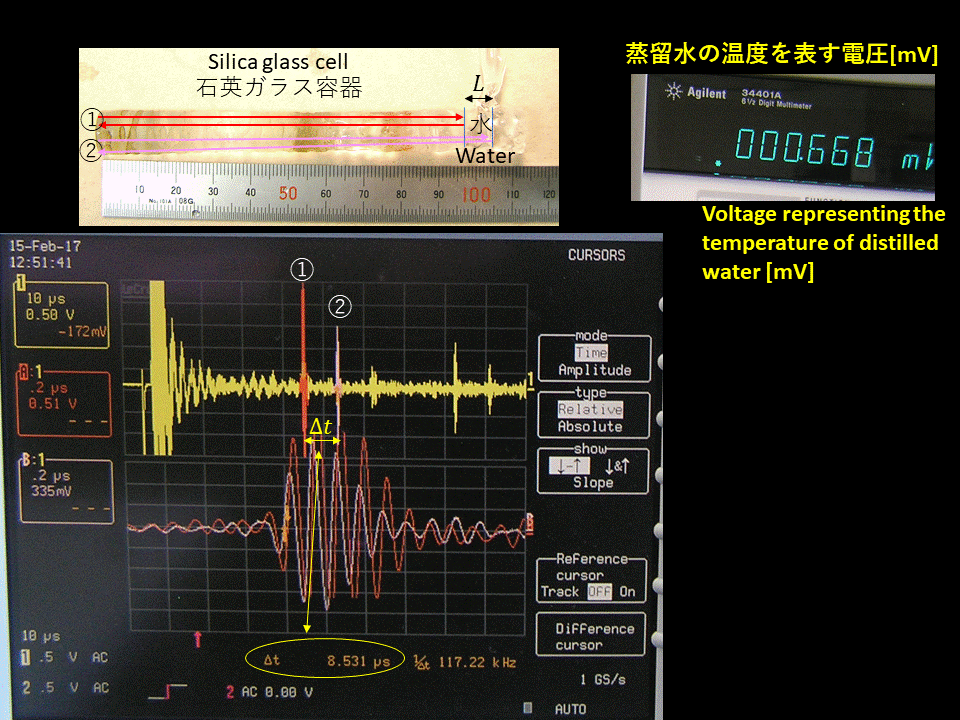Sound velocity measurement of distilled water
 |
| Screen of oscilloscope and digital voltmeter for temperature measurements |
| The above figure shows the screen of the oscilloscope measuring the ultrasonic pulse, and the digital voltmeter (upper right part) measuring the thermoelectromotive force of the thermocouple that represents the temperature of the distilled water. A photograph of the silica glass cell is also inserted for reference. The ultrasonic pulse signal (1) (red arrow path) transmitted through the silica glass rod and reflected at the boundary with water is the red pulse (1) on the oscilloscope screen, and the ultrasonic pulse that passes through the water and is reflected on the opposite glass surface is indicated by a pink arrow path. The signal of the pink pulse (2) on the oscilloscope screen corresponds to the second path. The time difference Δt between pulse (1) and pulse (2) is displayed on the lower part of the oscilloscope screen as surrounded by a yellow ellipse. The time Δt corresponds to the time when the ultrasonic waves make a round trip in water (the one way length is L), and the sound speed in water can be calculated by the equation v=2L/Δt. Below are some screen shots of ultrasonic measurements of distilled water. Let's find the sound speed in water at each temperature with 2L = 12.58 mm. |
|
|
|
| 16.8oC | 31.3oC |
|
|
|
| 44.8oC | 67.5oC |
|
|
|
| 76.7oC | 85.9oC |
Experimental data of the speed of sound of distilled water
|
Thermoelectromotive force [mV] |
Temperature [oC] |
Time interval Δt [sec] |
Speed v [m/s] |
|
0.668 |
16.8 |
8.531×10-6 | |
|
1.258 |
31.3 |
8.316×10-6 | |
|
1.809 |
44.8 |
8.197×10-6 | |
|
2.748 |
67.5 |
8.100×10-6 | |
|
3.128 |
76.7 |
8.092×10-6 | |
|
3.510 |
85.9 |
8.099×10-6 | |